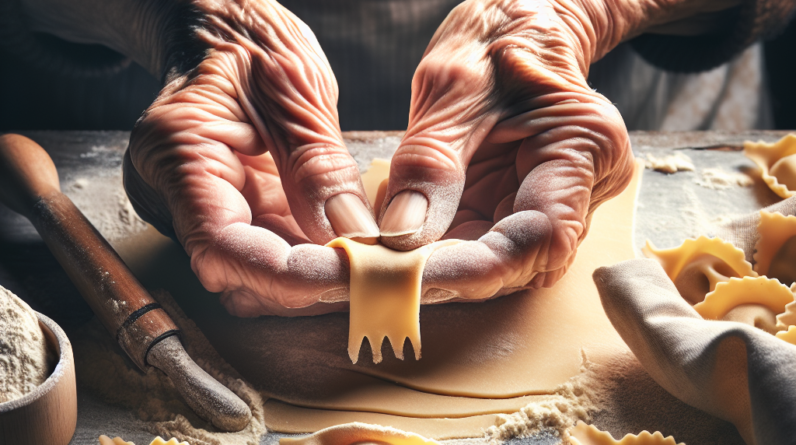When it comes to Italian cuisine, one cannot ignore the significant role that olive varieties play in enhancing the flavors and textures of various dishes. From the fruity and delicate flavors of the Leccino olives to the robust and peppery notes of the Coratina olives, each variety brings its unique characteristics to the table. Whether it’s drizzling the rich extra virgin olive oil over fresh salads or infusing it into pasta sauces, the selection of the right olive variety can truly elevate the culinary experience. Join us as we embark on a journey to explore the diverse and fascinating world of olive varieties in Italian cuisine.
The Importance of Olive Varieties in Italian Cuisine

Variety as the Essence of Italian Cuisine
In the rich tapestry of Italian cuisine, olive varieties play a vital and multifaceted role. Italy, renowned for its culinary tradition, embraces a kaleidoscope of flavors, textures, and aromas that are intricately linked to the different olive varieties found throughout the country. These versatile fruits are not only a staple in the Mediterranean region but have also become synonymous with Italian cuisine worldwide. The diverse range of olive varieties is the essence that gives Italian dishes their distinct flavor profiles, making them cherished by food enthusiasts everywhere.
The Intricate Relationship Between Olive Varieties and Italian Culture
For Italians, food is more than mere sustenance—it is a way of life and a source of immense pride. The intricate relationship between olive varieties and Italian culture goes far beyond the plate. Olive trees are deeply rooted in the history, traditions, and landscapes of Italy. For centuries, they have symbolized peace, fertility, and even divine connection in various mythologies. The cultivation of olive trees has been passed down through generations, with families often treasuring ancient olive groves as valuable heirlooms. The cultivation techniques, harvesting methods, and olive oil extraction processes have become cultural heritage, safeguarded and celebrated throughout the country.
Preserving Tradition: Ancient Olive Varieties in Italian Cuisine
Italy boasts a wide range of olive varieties, some of which have been cultivated for thousands of years. These ancient olive varieties not only represent the rich agricultural heritage of the region but also contribute significantly to the exquisite flavors found in Italian cuisine. From the delicate and buttery Taggiasca olives of Liguria to the robust and fruity Coratina olives of Puglia, each ancient variety offers a unique sensory experience. Preserving these ancient olive varieties is essential in honoring Italian traditions and ensuring the continued availability of authentic flavors for future generations to enjoy.
Exploring the Dedication to Quality: High-Quality Olive Varieties in Italian Cuisine
When it comes to Italian cuisine, quality is paramount. Italians take great pride in their ingredients, and olive varieties are no exception. Italy is renowned for producing some of the highest quality olives in the world, thanks to the favorable climate, fertile soil, and meticulous cultivation practices. From the hand-harvesting of olives to the careful processing of olive oil, every step is undertaken with unwavering dedication to ensure the exceptional taste and aroma that defines Italian cuisine. The commitment to quality not only preserves the integrity of traditional dishes but also enhances the overall dining experience.

The Aesthetic Appeal: The Role of Olive Varieties in Italian Presentation
Italian cuisine is not just a feast for the taste buds but also a visual delight. The presentation of dishes is an art form in itself, and olive varieties play an important role in enhancing the aesthetic appeal of Italian culinary creations. With their vibrant hues, ranging from deep purples to pale greens, olives add contrasting colors, visual interest, and a touch of elegance to various dishes. Whether garnishing a vibrant Caprese salad or adding a pop of color to a rustic pasta dish, the diverse palette of olive varieties elevates the visual impact, making Italian cuisine all the more enticing.
A Symphony of Flavors: Different Olive Varieties in Italian Cuisine
Italian cuisine is known for its intricate flavor combinations, and olive varieties are key players in this symphony of tastes. Each olive variety possesses its unique flavor profile, ranging from mild and buttery to bold and peppery. The delicate sweetness of Castelvetrano olives pairs perfectly with fresh mozzarella in a classic Caprese salad, while the rich and fruity aroma of Leccino olives harmonizes beautifully with grilled meats. By carefully selecting and utilizing different olive varieties, Italian chefs can create intricate layers of flavors that tantalize the taste buds and leave a lasting impression.

Culinary Applications: The Versatility of Olive Varieties in Italian Cooking
Olive varieties offer endless possibilities in Italian cooking, showcasing their remarkable versatility. Whether used as a key ingredient, a finishing touch, or a standalone component, olives can transform a dish and bring it to life. They can add depth and complexity to sauces, enhance the flavor of pasta dishes, or provide a delightful burst of brininess in Mediterranean-inspired salads. From antipasti to main courses and even desserts, olive varieties find their way into a myriad of culinary applications, making Italian cuisine an ever-evolving treasure trove of taste exploration.
Understanding the Health Benefits: Nutritional Value of Olive Varieties in Italian Cuisine
Apart from their delectable flavors, olive varieties also offer numerous health benefits, making them an integral part of a balanced Italian diet. Olives are rich in monounsaturated fats, which are known to promote heart health and reduce LDL cholesterol levels. They are also packed with antioxidants, vitamins, and minerals, providing a natural boost to the immune system and overall well-being. The anti-inflammatory properties of olive oil, derived from these varieties, have been linked to improved brain function, reduced risk of chronic diseases, and even enhanced longevity. In Italian cuisine, the combination of exquisite taste and health-promoting properties makes olive varieties a truly nourishing choice.
Olive Oil: The Culinary Backbone of Italian Cuisine
Diving deeper into the world of olive varieties, it is impossible to overlook the significance of olive oil in Italian cuisine. Olive oil is the golden elixir that infuses Italian dishes with its velvety texture, distinct aroma, and unparalleled flavor. The production of high-quality olive oil is an art form in itself, with each step meticulously managed to preserve the freshness and integrity of the fruit. From drizzling over salads and bruschetta to cooking, sautéing, and marinating, olive oil brings out the best in Italian ingredients, acting as the backbone of countless recipes. Its contribution to the Italian gastronomic heritage cannot be overstated.
Sourcing Olive Varieties: The Pursuit for Taste and Authenticity
To truly appreciate the role of olive varieties in Italian cuisine, it is important to understand the efforts made to source the finest and most authentic products. Families, producers, and chefs embark on a journey to find olive varieties that encapsulate the essence of their respective regions, often seeking out small-scale, artisanal producers committed to sustainable farming practices. The pursuit for taste and authenticity drives them to explore different olive-growing regions, visit local markets, and establish direct relationships with growers. This dedication ensures that the olive varieties used in Italian cuisine are of the highest quality and imbued with the spirit of tradition and passion.
In conclusion, the importance of olive varieties in Italian cuisine cannot be underestimated. From ancient heirlooms to high-quality cultivars, these diverse fruits contribute to the flavors, culture, traditions, and health benefits that define Italian gastronomy. As we delve into the enchanting world of Italian cuisine, let us celebrate the rich symphony of olive varieties that continue to captivate our palates and keep the tradition alive.










